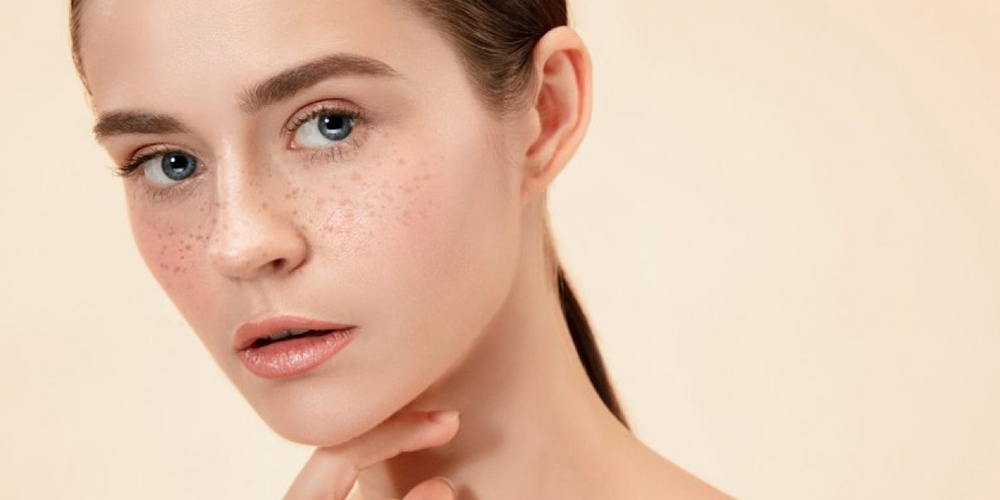- +91 97727 60561
- info@drdhabhai.in
- Wed - Sat: 5 PM - 8 PM Sunday Off

Freckles, those small brown spots that appear on the skin due to overproduction of melanin, are often considered cute by some but can cause concern for others. While freckles are generally harmless and do not pose any health risks, many individuals seek ways to reduce or eliminate them for cosmetic reasons. This comprehensive guide will delve into the various aspects of freckles, including their causes, prevention, and the most effective treatments available.
Freckles are flat, circular spots that commonly appear on sun-exposed areas of the skin, such as the face, arms, and shoulders. They are more common in individuals with fair skin and those with a genetic predisposition. Freckles develop due to increased melanin production, the pigment responsible for giving our skin its colour. When the skin is exposed to sunlight, it triggers the melanocytes to produce more melanin, forming freckles.
Preventing freckles can be challenging, especially for individuals who are genetically inclined to develop them. However, adopting certain habits can help minimize their appearance. The most crucial preventive measure is to limit sun exposure, especially during peak hours when the sun’s rays are strongest. Wearing protective clothing, such as wide-brimmed hats, long-sleeved clothing, and a broad-spectrum sunscreen with high SPF, can also significantly reduce freckle formation.
For natural and non-invasive solutions, various home remedies may help fade freckles over time. These remedies include using lemon juice, a natural skin lightener, and applying aloe vera gel, known for its soothing properties. However, it’s essential to be patient with these methods, as results may vary, and it could take weeks or even months to notice a difference.
Several OTC treatments are available that lighten freckles and even out skin tone. These typically contain ingredients like hydroquinone, glycolic acid, or kojic acid. While some users may find these products effective, using them cautiously and following the instructions is essential, as improper use may lead to skin irritation or other adverse reactions.
For those seeking more immediate and significant results, various cosmetic procedures can help treat freckles. One of the most common treatments is laser therapy, which targets the excess melanin in the freckles and breaks it down. Other options include cryotherapy, chemical peels, and intense pulsed light (IPL) therapy, each having its advantages and disadvantages.
If freckles are particularly bothersome or resistant to other treatments, dermatologists may prescribe more robust formulations to address the issue. Prescription creams containing higher concentrations of active ingredients, such as hydroquinone or tretinoin, can be more effective but require careful monitoring by a medical professional to ensure safety.
Regardless of the treatment, protecting the skin from the sun is crucial to prevent freckles from reappearing or becoming darker. Incorporating sun-safe habits into daily life, such as wearing sunscreen, seeking shade, and wearing protective clothing, can help maintain the results achieved through treatment.
Before beginning any freckle treatment, it’s essential to consult with a dermatologist. A dermatologist can assess your skin type, freckle severity, and medical history to recommend the most suitable treatment plan. They can also guide you on the potential risks and side effects of various treatments.
Freckles may be a natural part of some people’s appearance, but they can be a source of self-consciousness for others. Understanding the causes and prevention of freckles can help manage their appearance. Options are available for those seeking to reduce or eliminate freckles, from home remedies to cosmetic procedures and prescription treatments. However, combining therapy with proactive sun protection is the most effective approach. Consulting a dermatologist is essential to determining the most appropriate and safe action. Remember, embracing one’s unique features is a beautiful expression of individuality, but options for those seeking change are available to help them feel confident and comfortable in their skin.